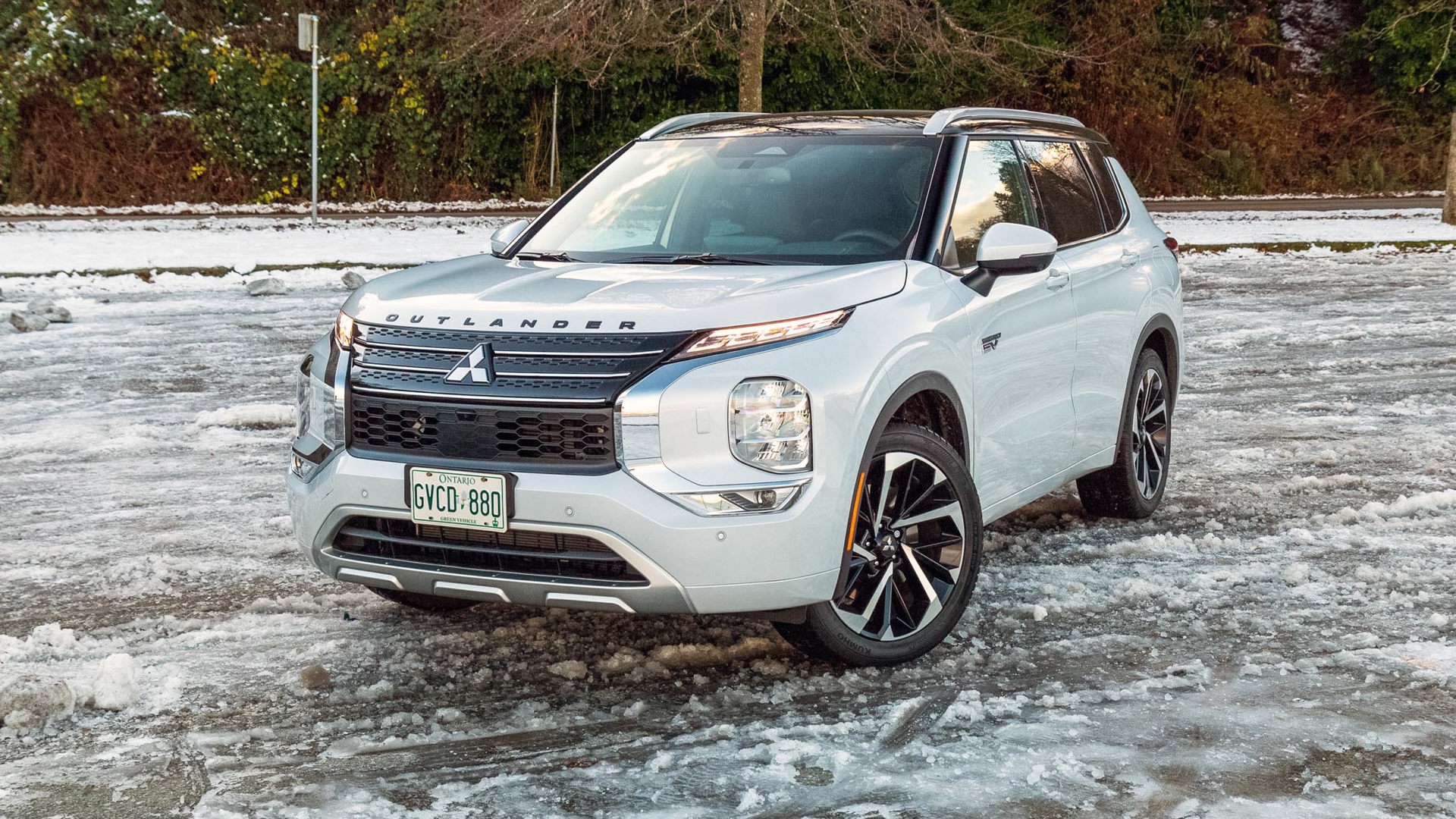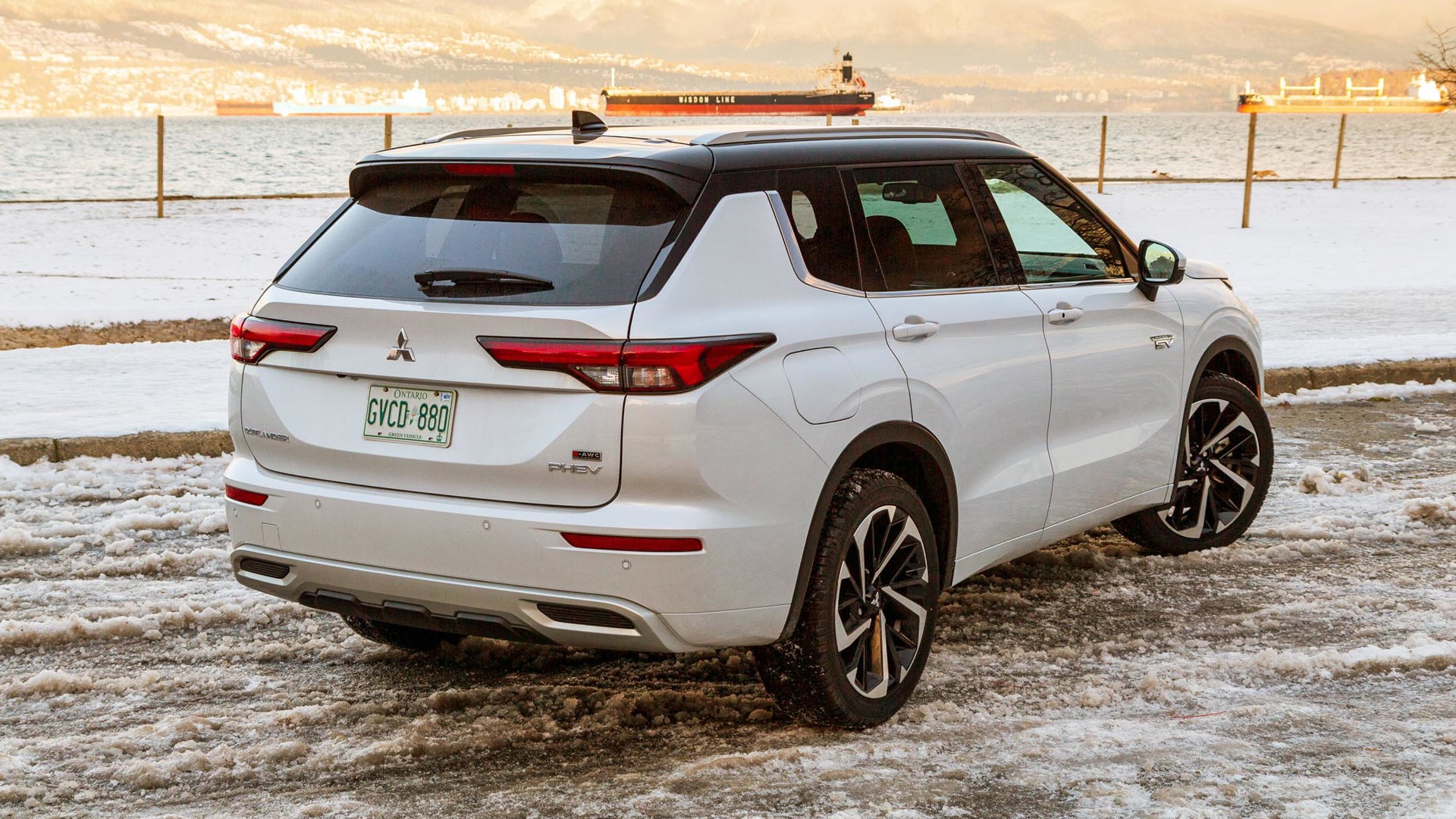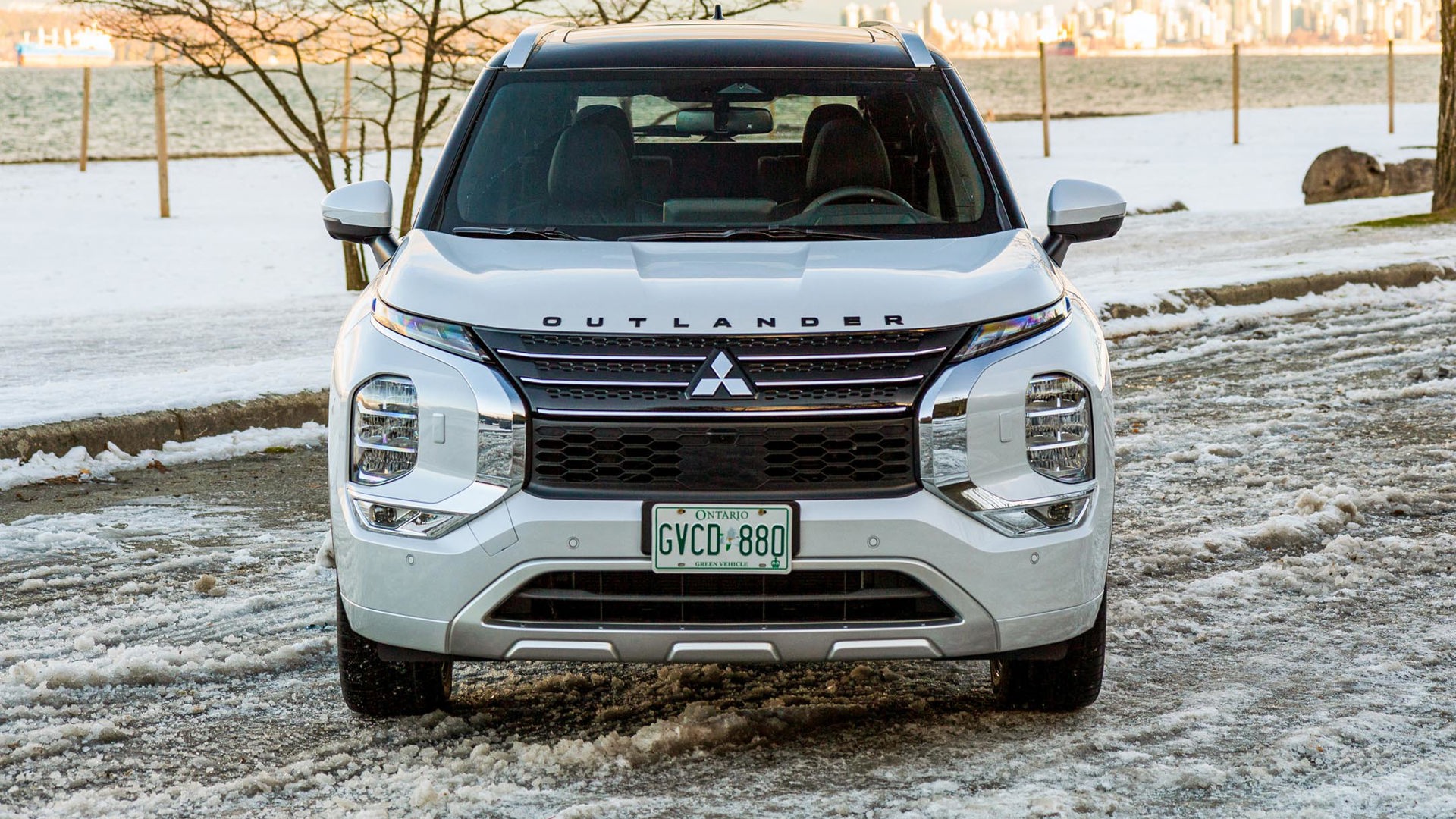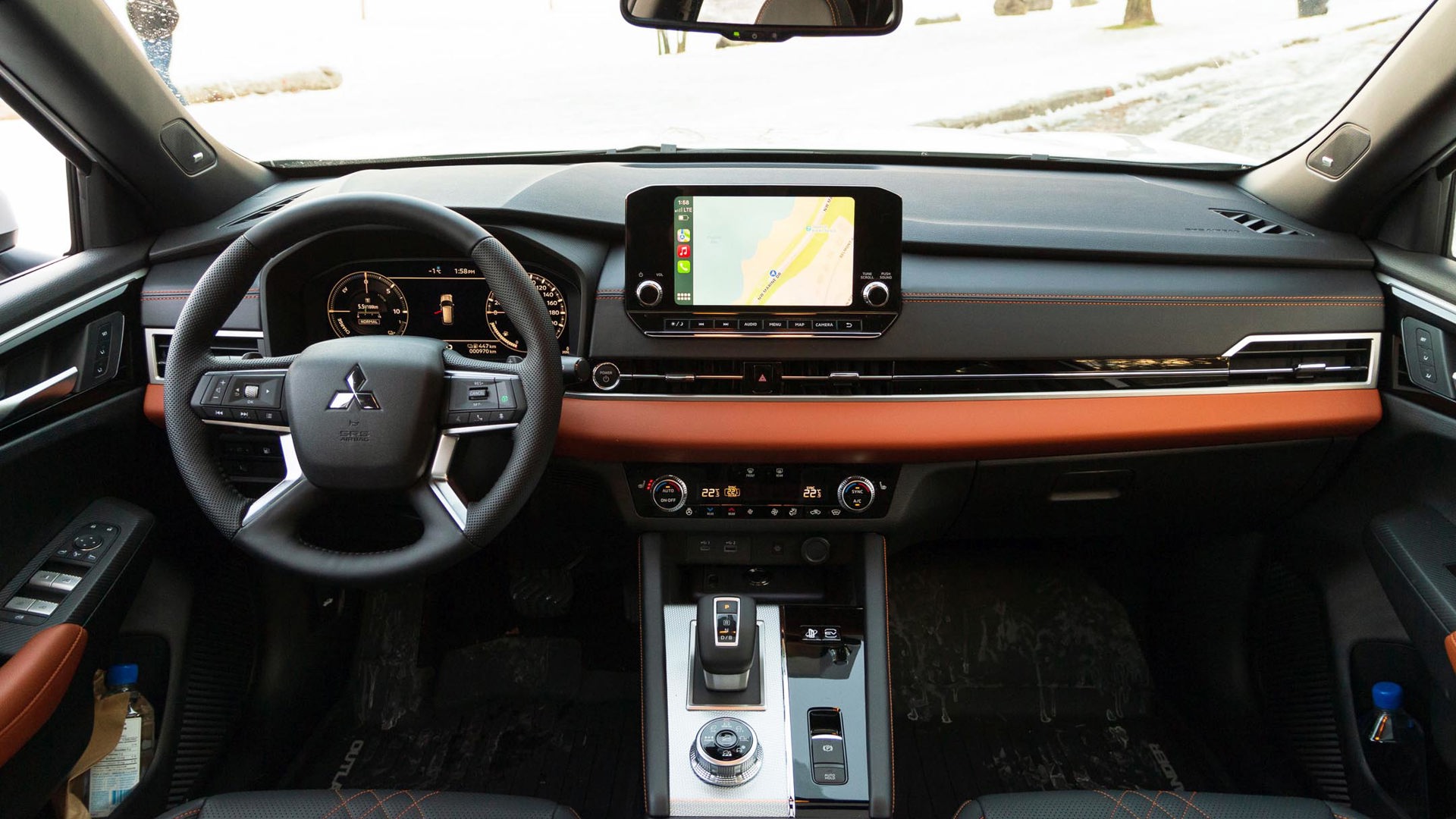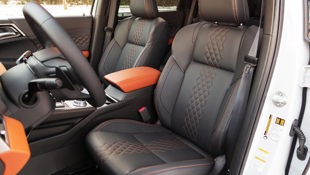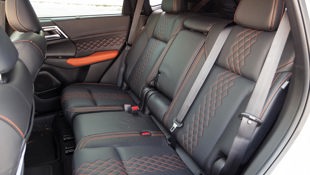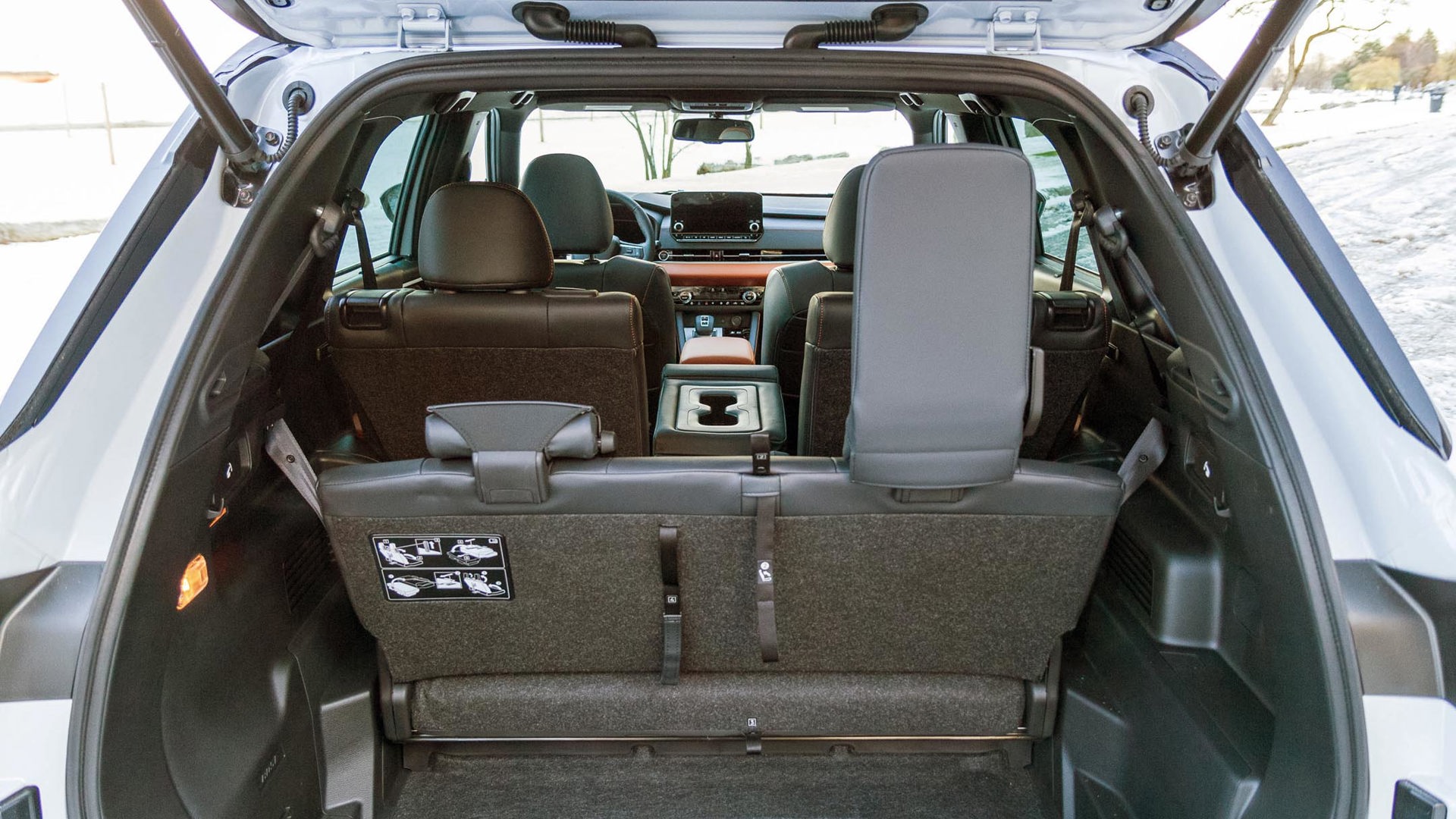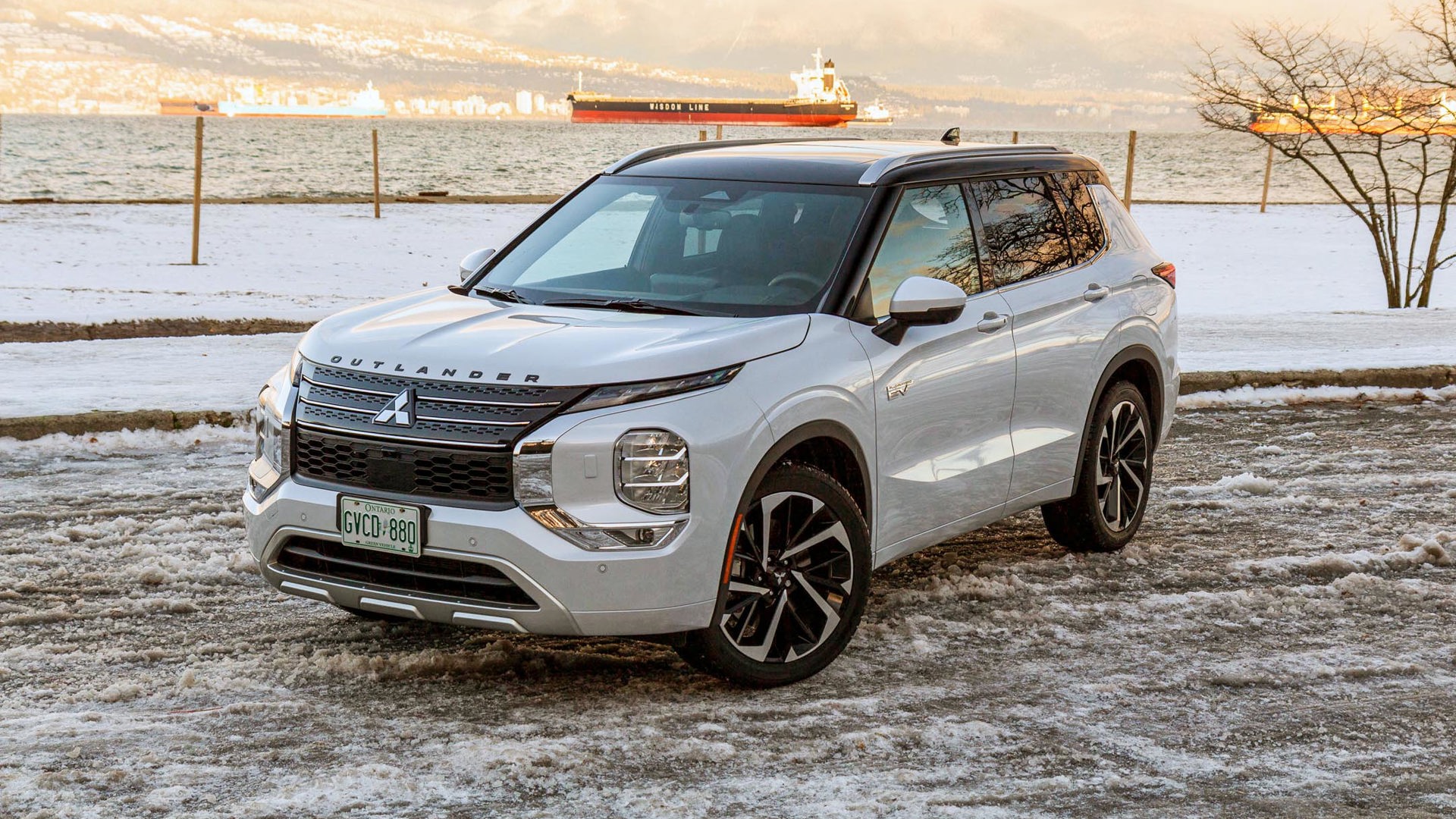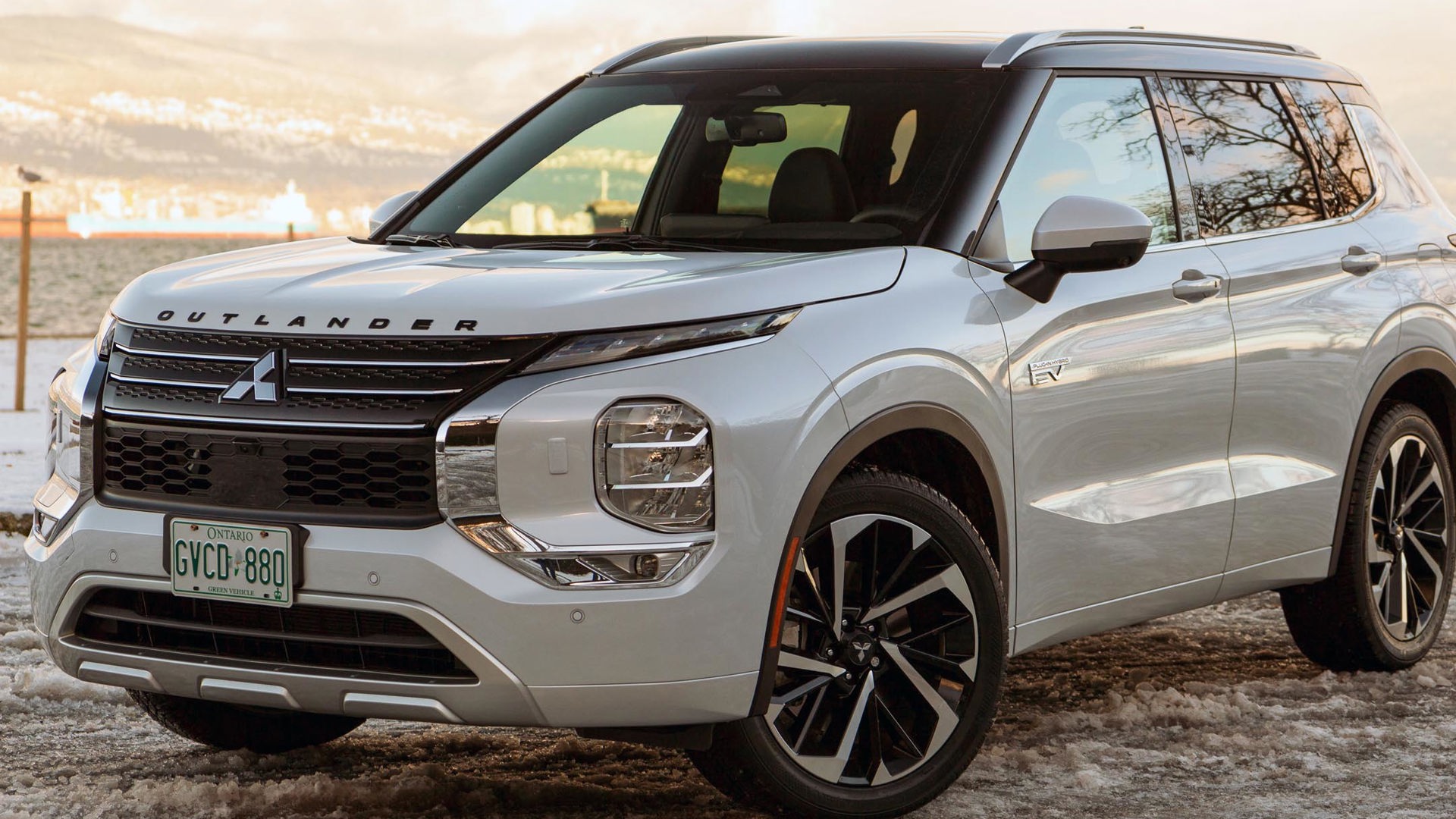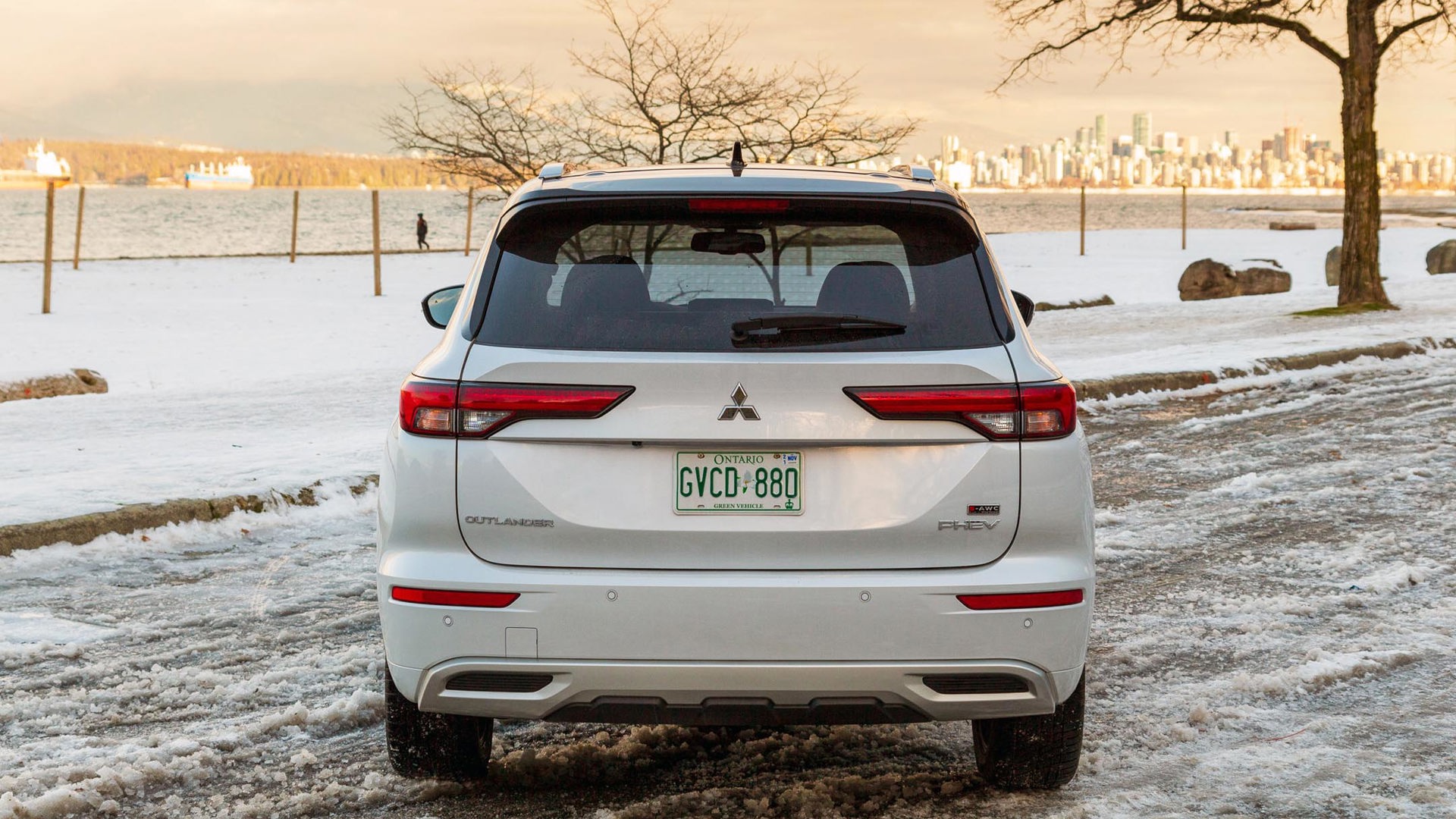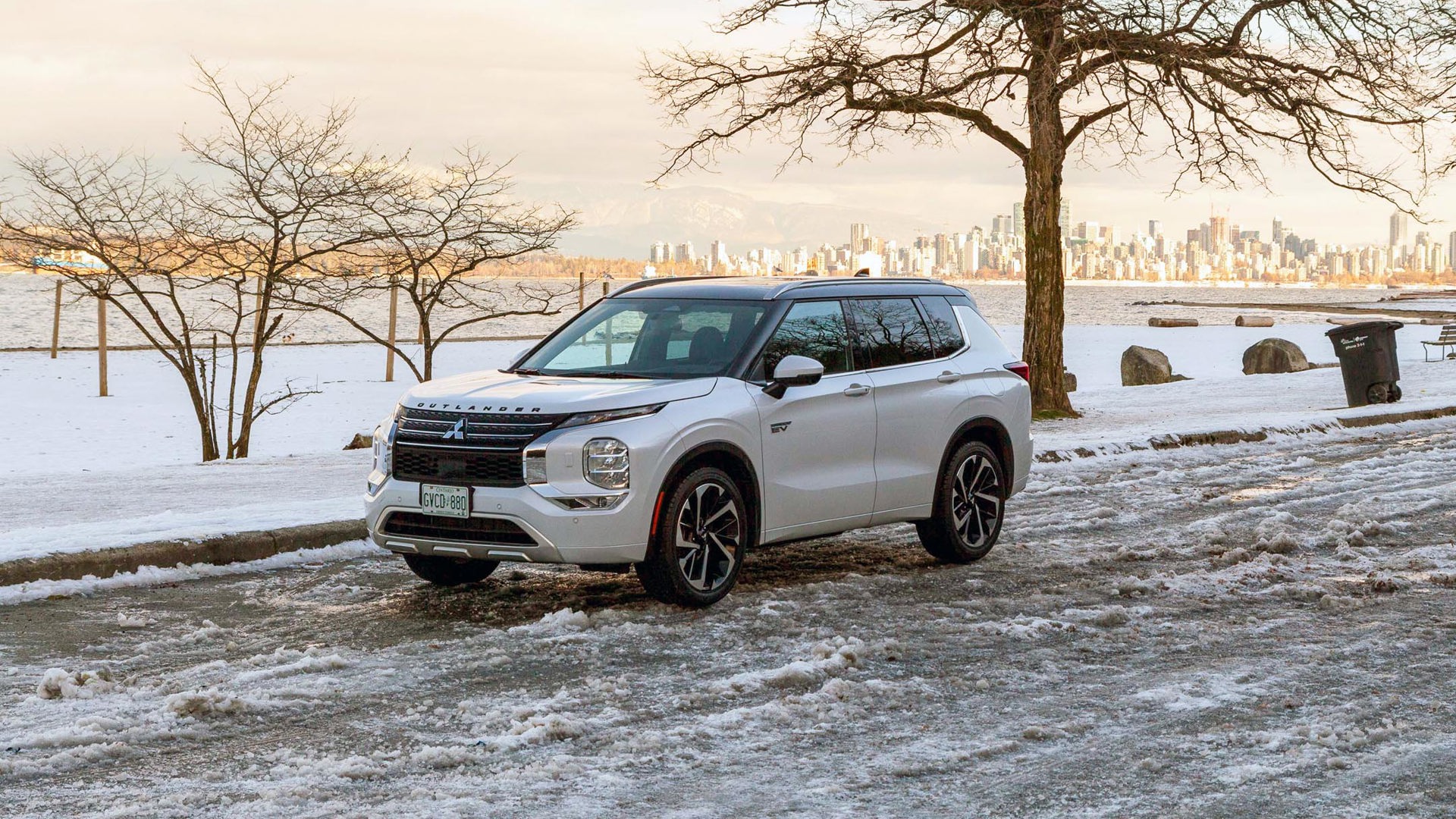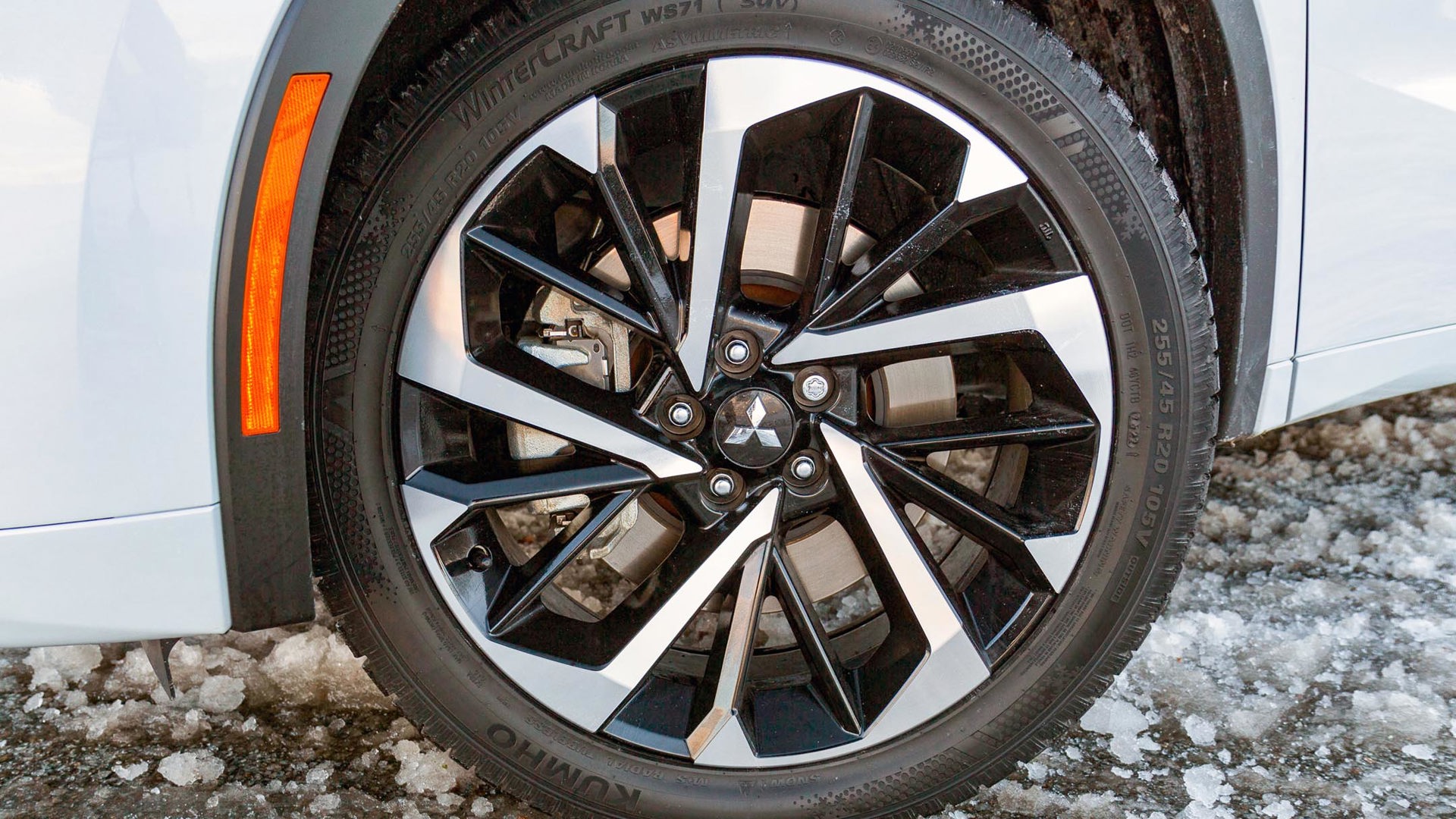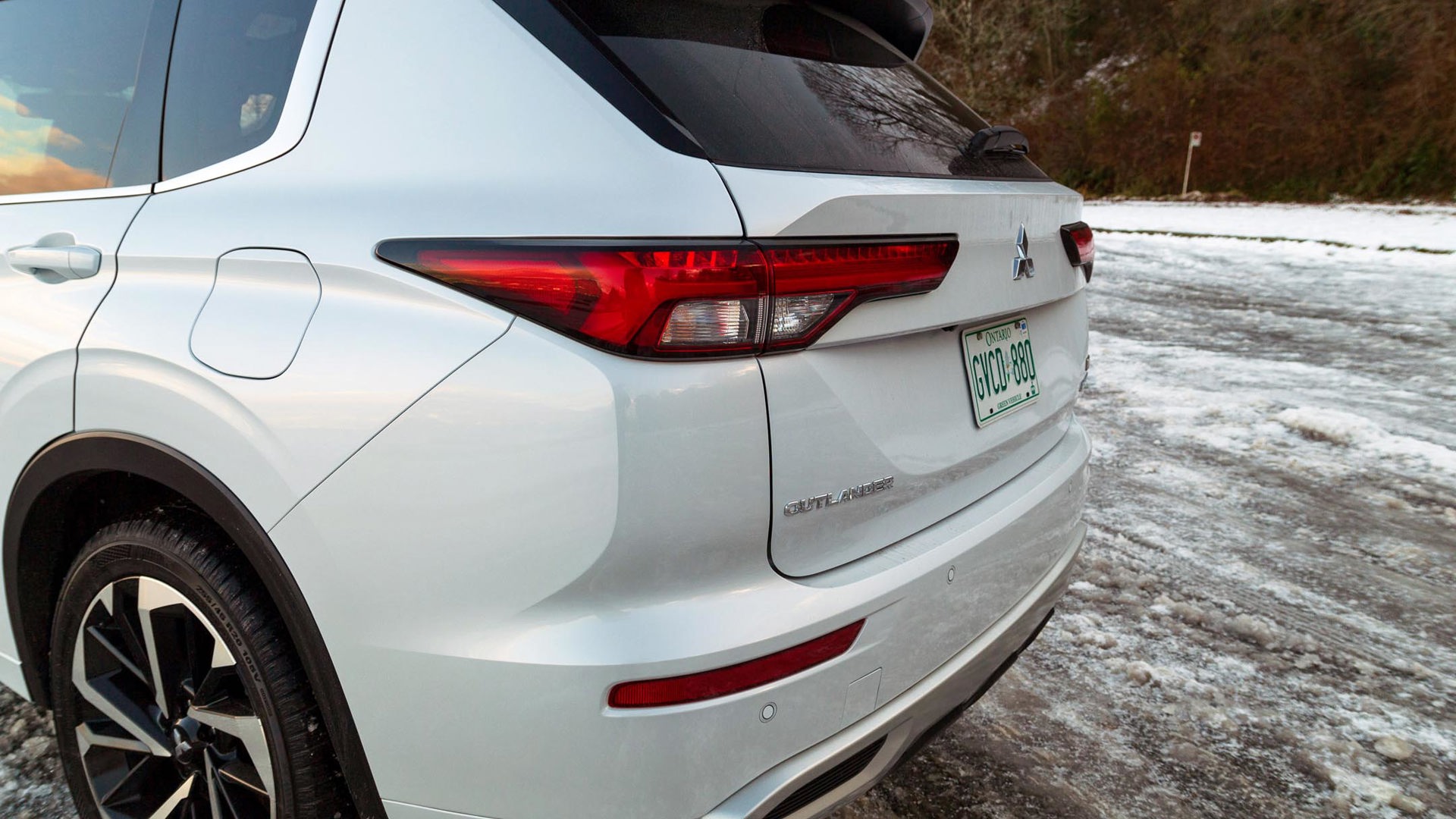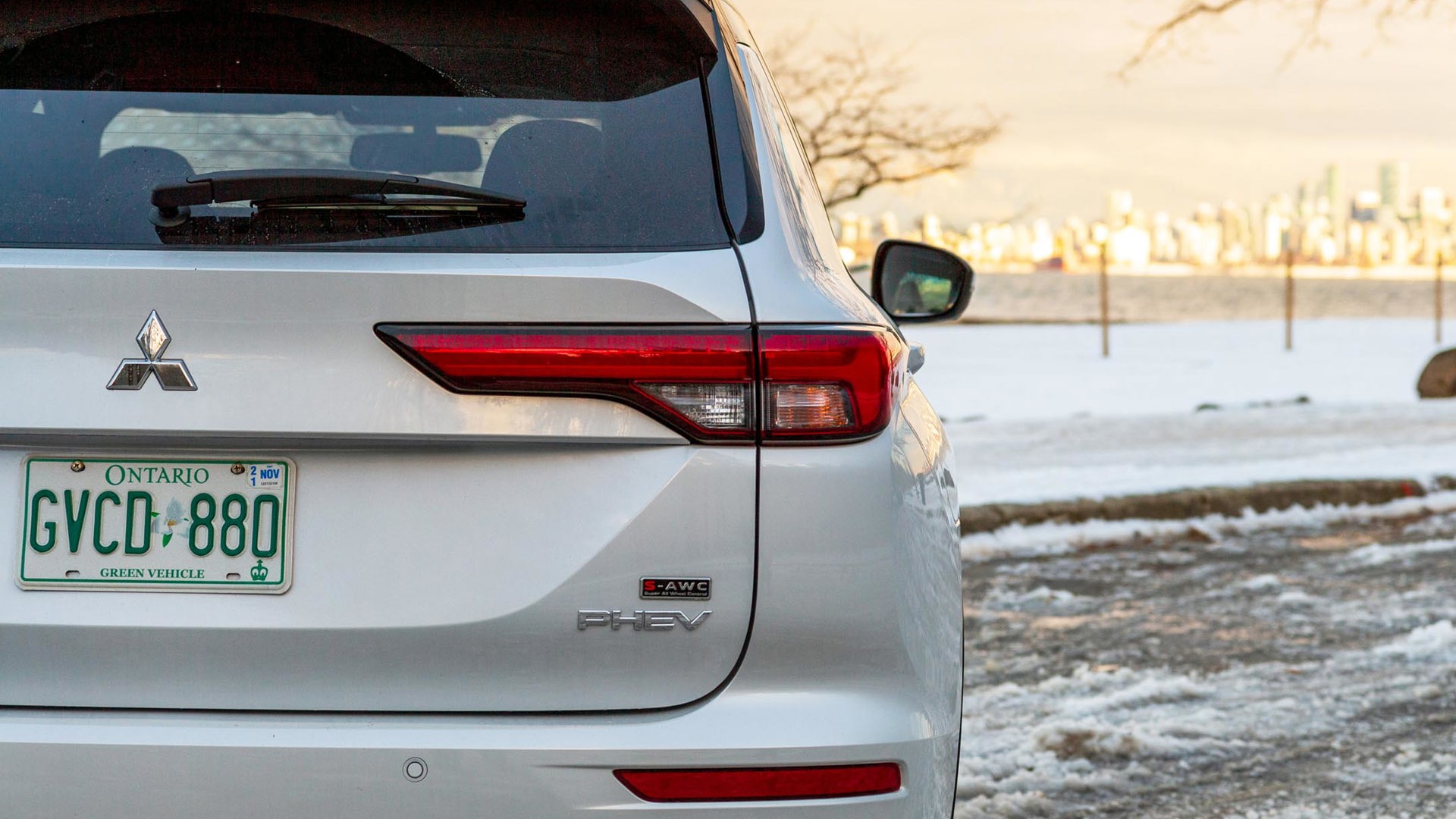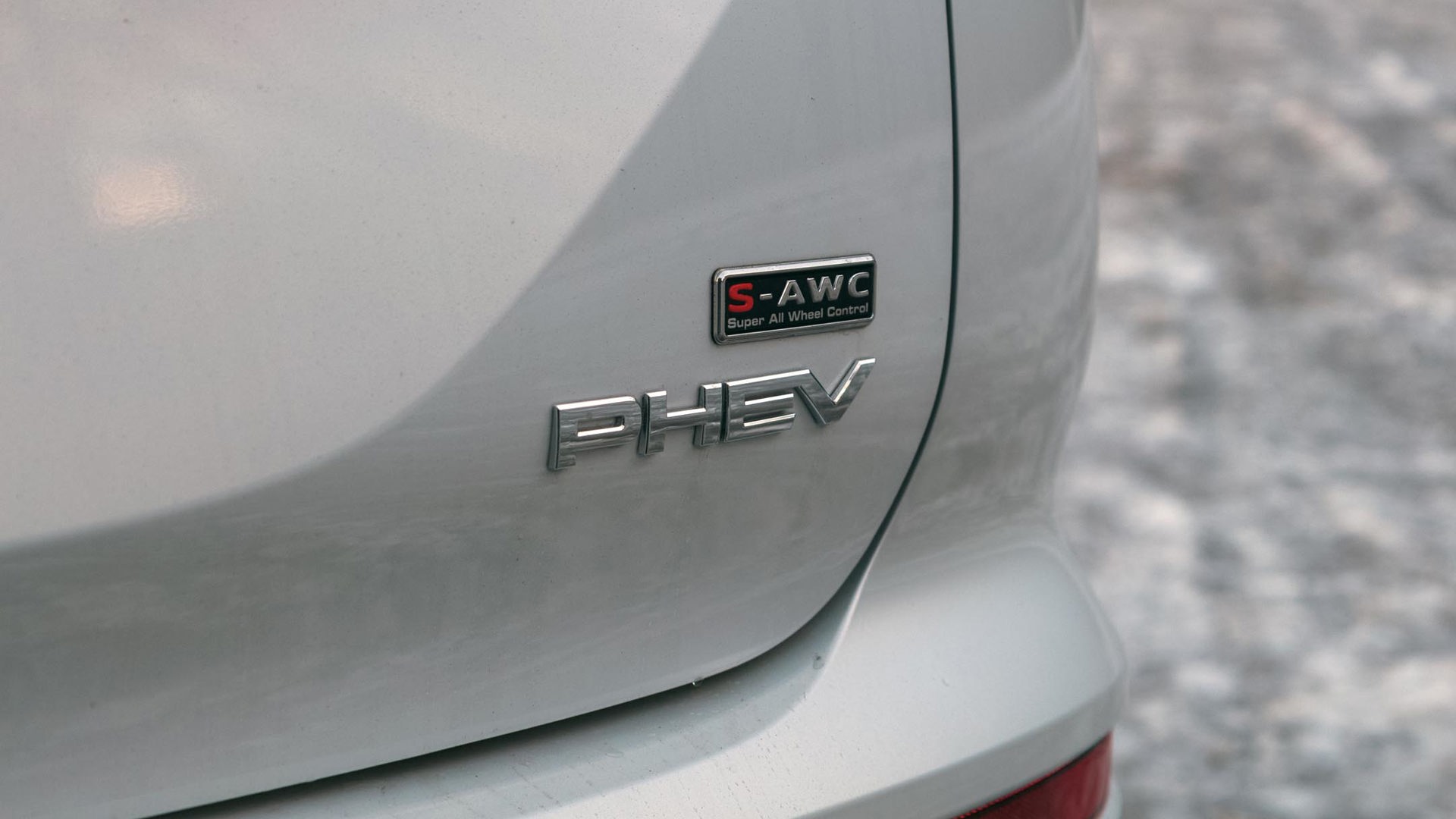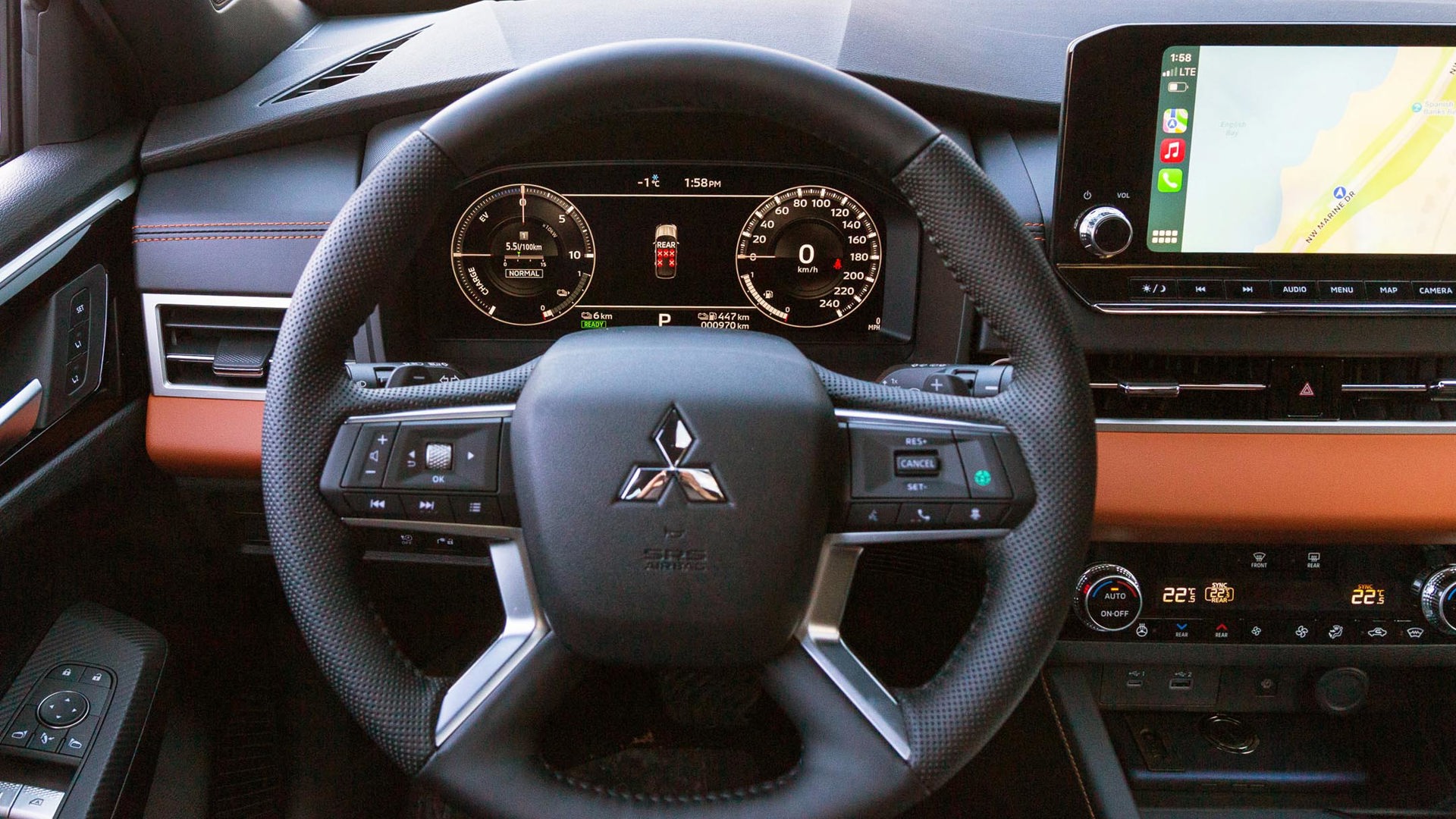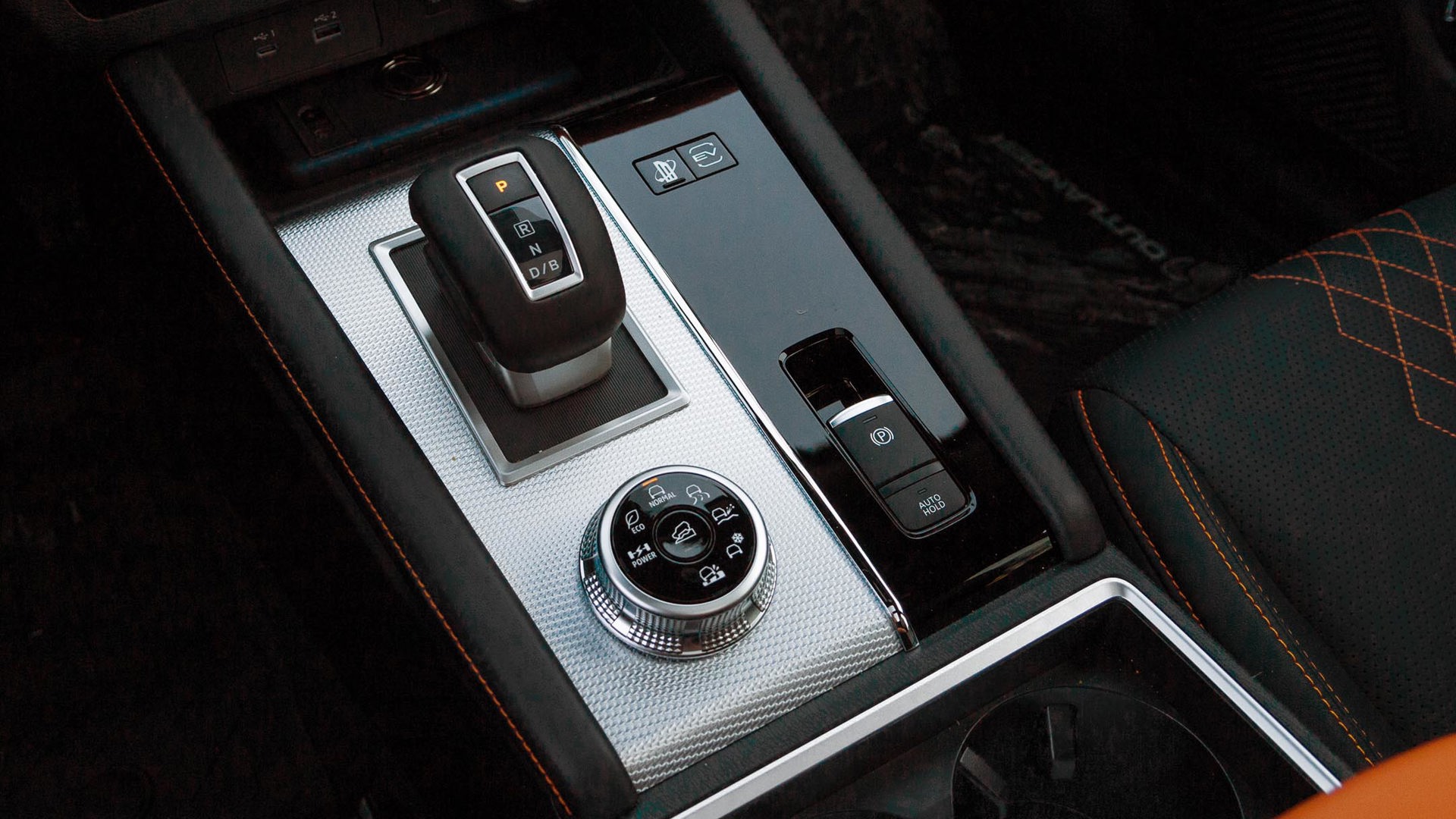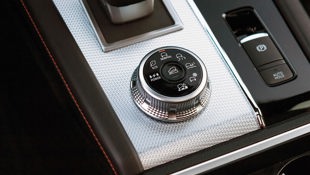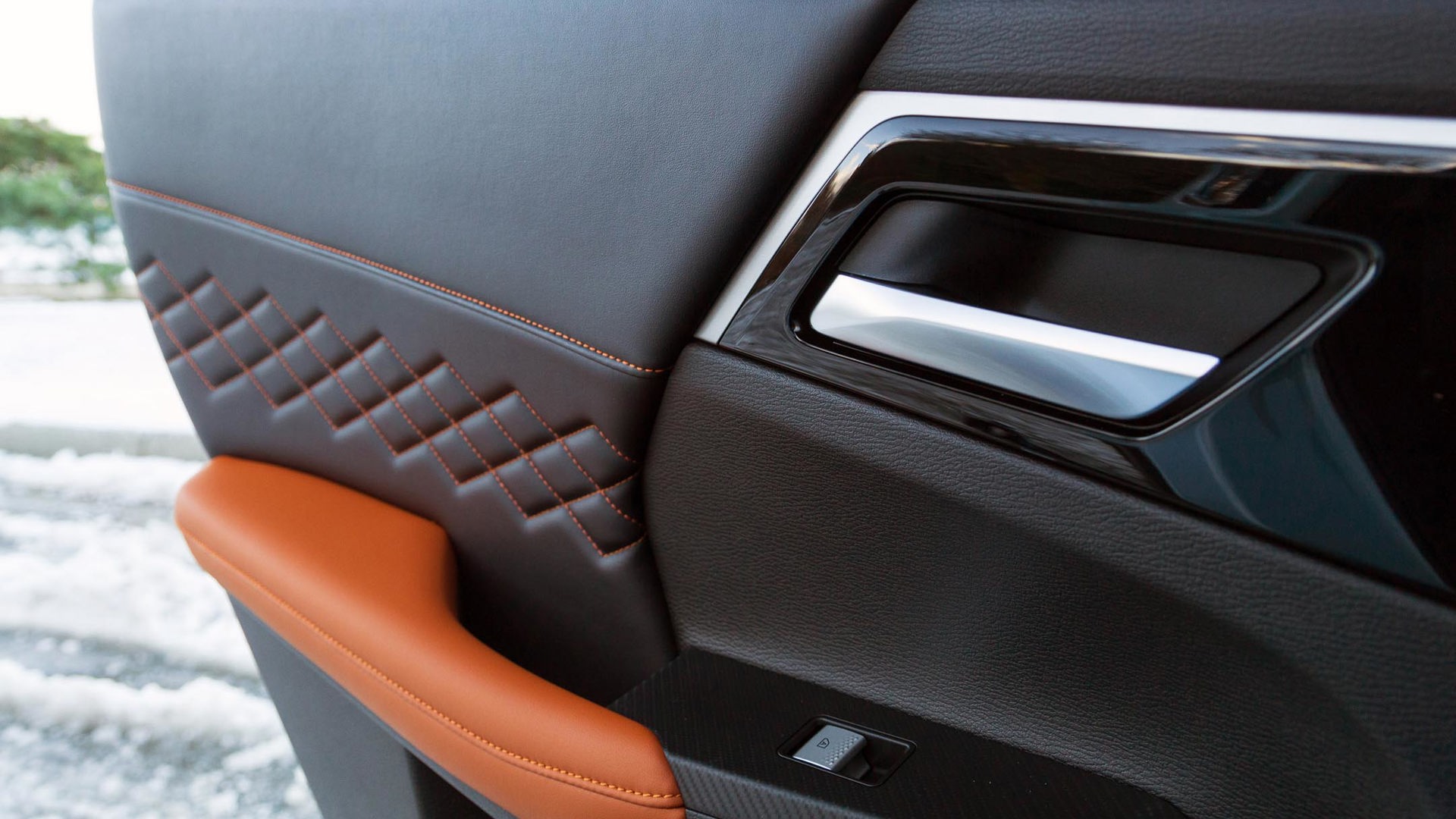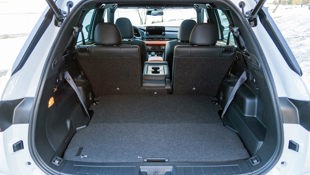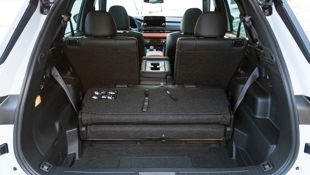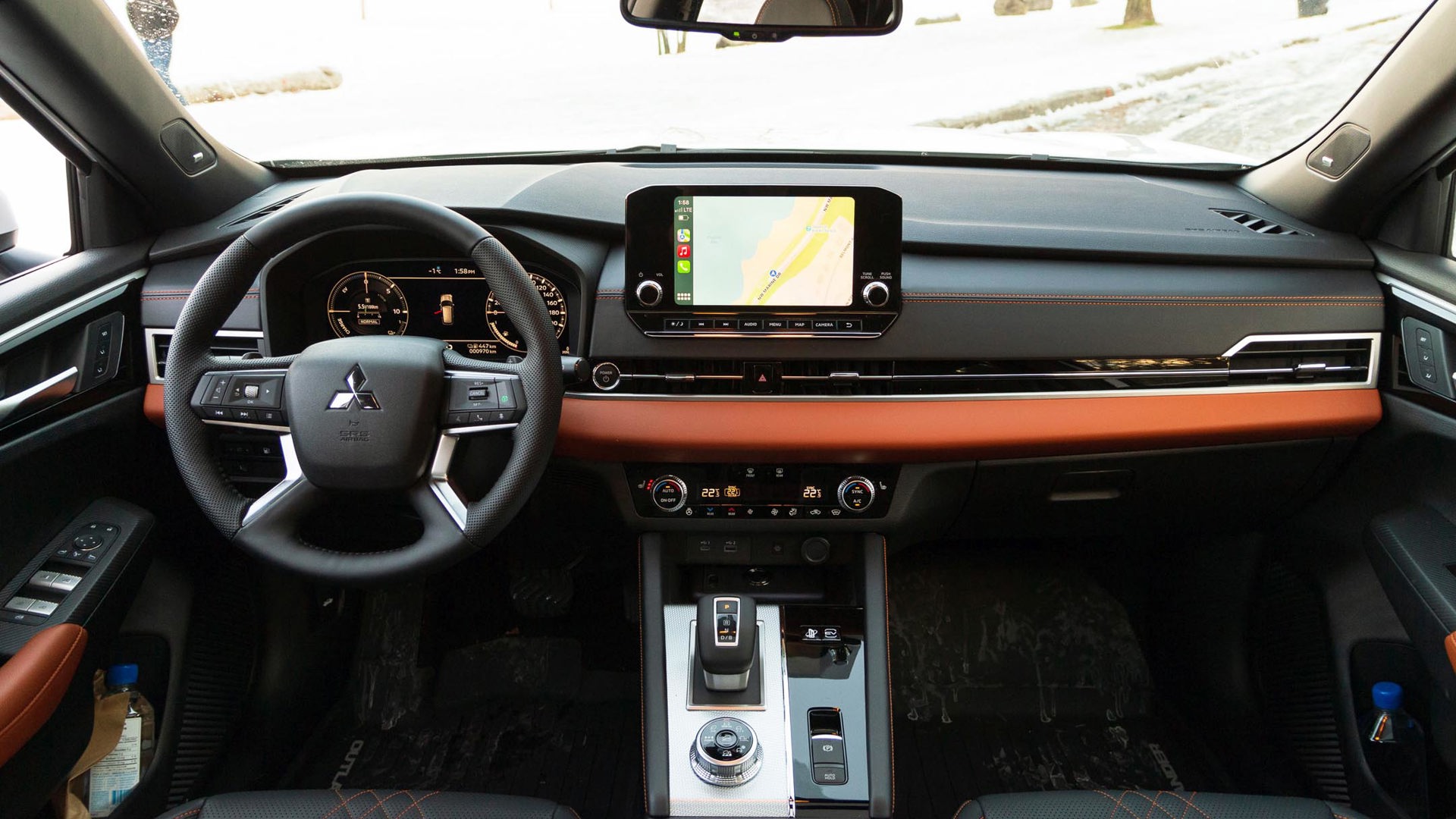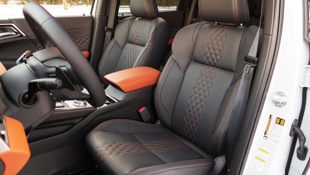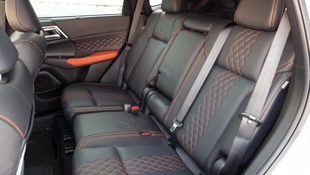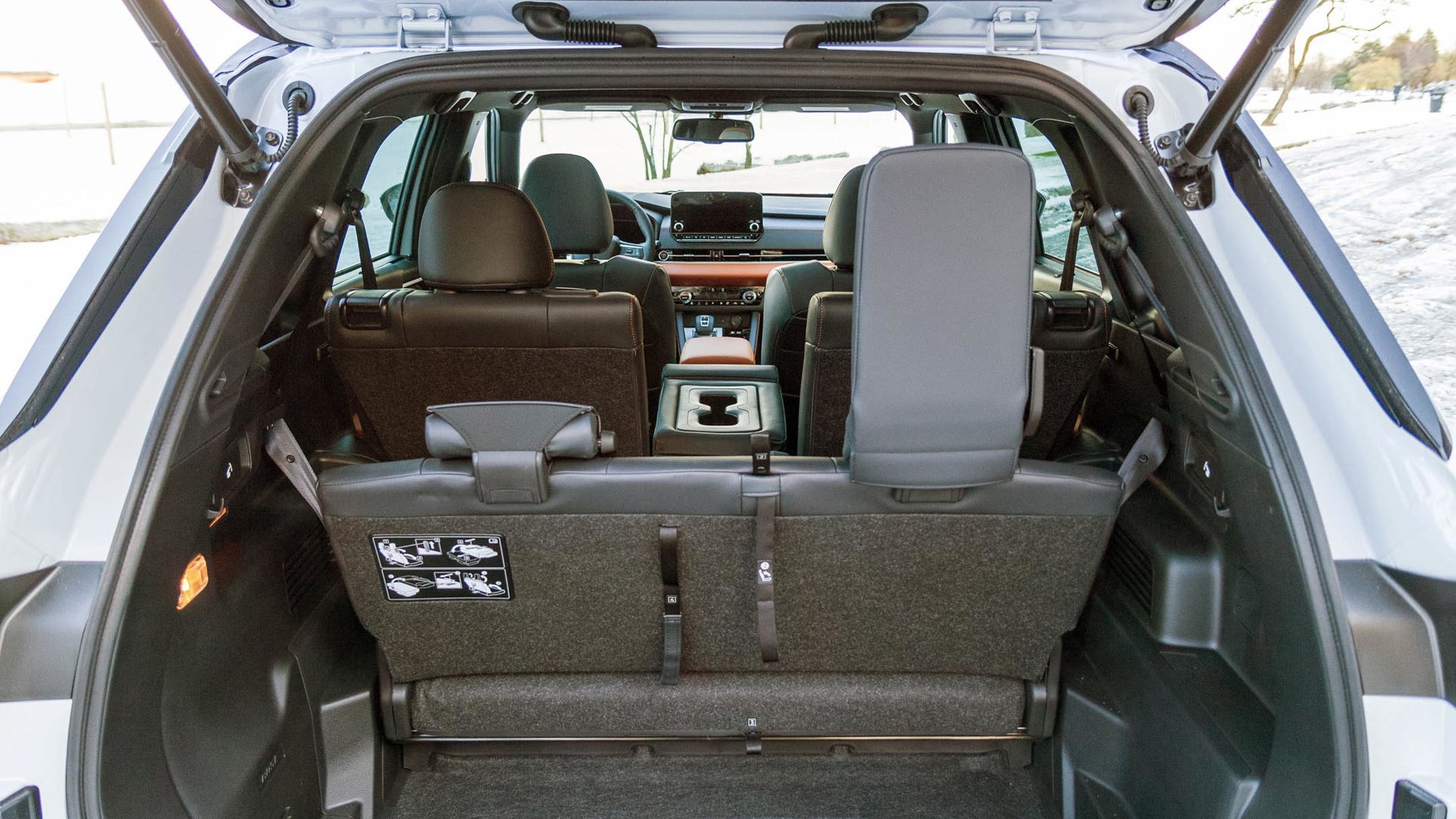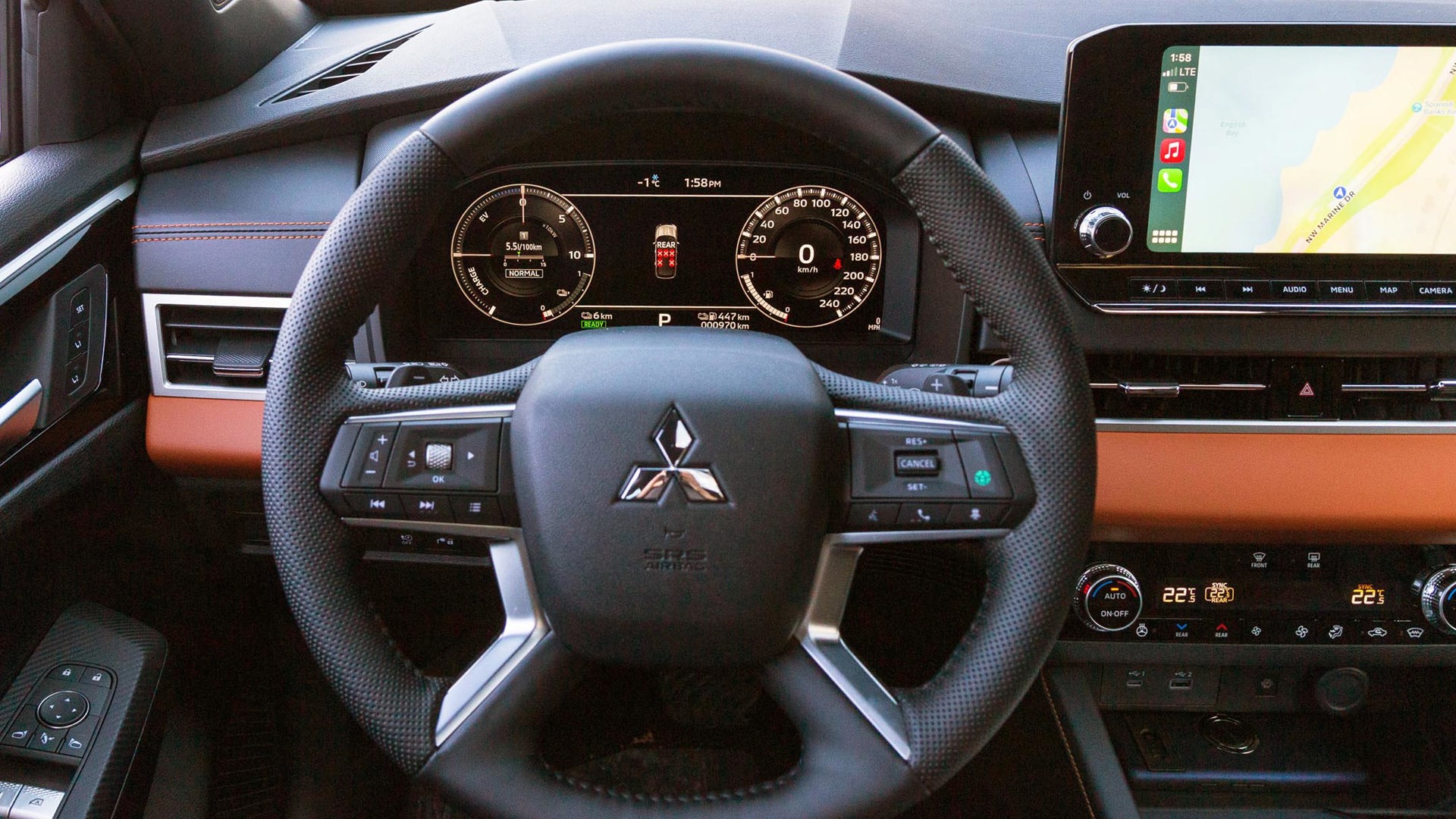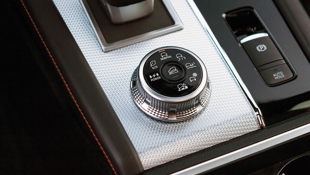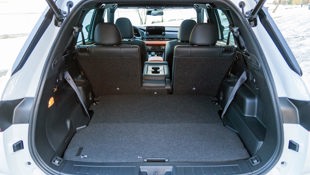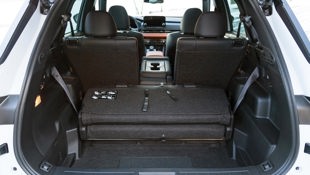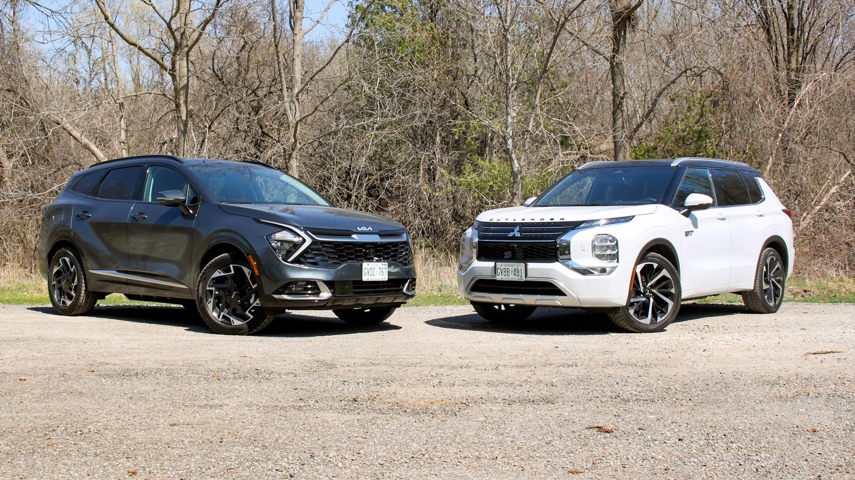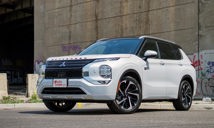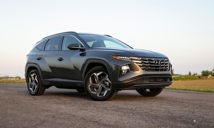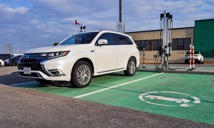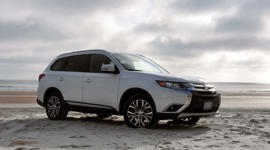Mitsubishi might be celebrating 20 years in Canada (and 40 years in the United States), but as an automaker it still largely flies under the radar.
The company’s own data says only around half of Canadian buyers are even aware of the brand, and 1/10th of them are actively considering buying one. Despite that, Mitsubishi has a history of some shockingly innovative vehicles. Take the first mass-produced electric vehicle (EV) sold in Canada, the i-MiEV. There was also the first plug-in hybrid (PHEV) crossover to go on sale in Canada, the Outlander that arrived four years ago. The 2023 Mitsubishi Outlander PHEV doesn’t rock the market in the same way that the first iteration did, but it manages to be an even bigger surprise.
Electric First, Gasoline Second
There’s a Honda behind the design and engineering of the Outlander PHEV: Kentaro Honda, Mitsubishi’s chief engineer for the Outlander project. He says the Outlander PHEV was designed as an EV first, with the hybrid part second. That doesn't mean it's an afterthought, but rather a decision made to prioritize the electric part of the experience.
The second-generation Outlander first launched as a gas-only model, and it shares a platform with the gas-only Nissan Rogue. When it comes to this PHEV version, two electric motors have been added – one front, one rear – that can power it in nearly every drive situation.
More Powerful Electric Motors Drive New Outlander
Up front is a 114-hp electric motor with 188 lb-ft of torque. In the rear is a more powerful unit, making 134 hp and 144 lb-ft. The company claims it made the rear motor more powerful in a nod to its rallying heritage, wanting the Outlander PHEV to feel more like the legendary Lancer Evolution than a mainstream compact crossover on a gravel road.
Where the prioritization of electrification can be felt is through the 2.4L gas engine that doesn’t normally drive the wheels. In electric mode, Outlander uses battery power to turn the wheels. In normal hybrid driving, it runs in series mode where the engine turns the generator to send more power to the battery and electric motors. Only on the highway, in cruising conditions, does the gas engine turn the wheels directly. It's done through a single-speed transaxle rather than a traditional automatic or continuously-variable transmission (CVT).
Range Extender Feel
Mitsubishi’s reasoning for this approach is that it provides EV feel in nearly all driving situations. There's near-instant torque that only electric motors can provide, plus silent and smooth operation in city traffic. The gas engine drives the wheels on the highway because it can operate in its ideal efficiency range and so it uses less energy.
On the road, the Outlander PHEV delivers on that promise of EV smoothness – in feel, at least. The power delivery and regenerative braking transitions are very well handled, but a drive in the Outlander was accompanied by a cacophony of electric sounds. High-pitched noises coming from the complicated parts underneath aren't exactly in keeping with the near silence that's typical of electrification. In fairness to Mitsubishi, EVs make different noises than gas vehicles. It’s tough to pin the blame on the sounds for being loud, or if they’re loud simply because they’re different.
At least the gas engine is much less intrusive than in other PHEVs, and especially compared with the old Outlander. The engine sound comes and goes as the extra power is needed, but even when locked in with charge or power modes it's in the background rather than on centre stage.
Acceleration Doesn’t Match the Output
What felt lacking was the result of the net 248 hp and 332 lb-ft the Outlander PHEV generates. That should make this a quick crossover, but instead acceleration was more on the “that’s OK” level. A claimed 9.5 seconds to 100 km/h isn’t quick by modern crossover standards, let alone ones with an electrified shot in the arm. And while acceleration runs probably aren't a priority when purchasing a plug-in, for the sake of comparison the Toyota RAV4 Prime is nearly four seconds quicker.
All-wheel drive is standard, and it offers something of a unique integration between power, stability, and braking systems. With quicker responses thanks to electric power instead of gas and the ability to brake both front and rear wheels, this is a big upgrade over the last Outlander's system. It kept the Outlander pointed where it was supposed to be despite a sudden snowfall and freeze in Vancouver the day before this media drive event. The active yaw control part of the system also works well to reduce the amount of motion that passengers feel on twisty back roads.
Bigger Battery Boosts Range
With a 20-kWh lithium-ion battery, the Outlander PHEV offers an electric range of 61 km. A big boost over the 39 km Outlander offered before, it's also more electric range than any other three-row PHEV. Of course, that’s because it's the only three-row PHEV on the market, but the range isn’t far from the segment-leading (and smaller) two-row RAV4’s 68 km. When the gas engine is doing the work, the estimate is a less than impressive 9.0 L/100 combined, though this author saw figures in the sixes on the computer.
Mitsubishi brought over one of the best features of its first PHEV: Level 3 charging. Using the CHAdeMo plug that's standard, the Outlander PHEV can get to an 80 per cent state of charge in 38 minutes at 50 kW. Home charging is less zippy with 3.5-kW Level 2 charging, but that will still top up the Outlander in around 6.5 hours. If you want to charge it using the gas engine, it’ll take about 94 minutes and use around three litres of gas, according to the automaker.
The battery pack is much larger in capacity than before but smaller in size. Combine that with revised power electronics and some other changes in the rear packaging and you suddenly have room for the third row of seats that were missing in the last-generation model. This is an occasional third-row – the seat cushions touch the second-row seatbacks – but with the second row slid forward there is room for kids or shorter adults. A third row, even a small one, has been a big buyer demand in the last few years, so this is a big win for Mitsubishi.
Larger and More Luxurious Cabin
Around 50 mm (two in) more length, width, and height help the stance of the Outlander PHEV. The dimensions also help with cabin space, adding hip- and headroom. Mitsubishi says the steering wheel has a longer telescoping reach than before, though even more travel would've been helpful during this test. The upright roof gives the Outlander excellent visibility in all directions, handy since the resolution of the surround-view cameras lags behind the average for this class of vehicle.
A 12.3-inch fully digital dash cluster is standard on the PHEV, and Mitsubishi has given it some cool (and functional) new gauges. The power meter shows electric motor output and regenerative braking rates, and it will also tell you how much power the gas motor is making. The regen meter gives you clearly defined lines to illustrate how much braking each of the six paddle-selectable regen modes will provide.
An eight-inch screen is standard in the base ES, and the rest of the lineup gets a nine-inch unit. Android Auto and Apple CarPlay come with both, but the bigger screen gets wireless CarPlay and built-in navigation. Mitsubishi’s system isn’t the most intuitive (though it is responsive), and took more time getting used to than this brief test provided. The graphics are also a bit dated, which seems odd for what is a very sharp display panel.
Top-Shelf Interior
Mitsubishi calls its new design philosophy translates to “authentic and majestic.” The company calls it detailed craftsmanship, with impressive attention to detail and excellent use of upscale touches. The quilted seats in SEL and GT models, for example, would feel at home with a price tag 50 per cent higher than the company is asking. The GT Premium adds massage seats this year, a feature that the gas version doesn’t offer and one that’s appreciated on long drives.
Final Thoughts
It’s the cabin that’s the real surprise of the 2023 Mitsubishi Outlander PHEV. Mazda may have set the benchmark for mainstream interior fit and finish, but if Mitsubishi hasn’t raised it then it certainly has fired a shot across the bow. Alongside the interior, the second-generation gas-electric system’s advances make this feel like a much more fully formed plug-in than its competition.
Mitsubishi says it has welcomed more competition to the PHEV crossover segment. Toyota, Ford, Hyundai, and Kia joining the segment has lead to more eyes on the Outlander PHEV. With the second-generation model, the Outlander PHEV doesn’t need to shy away from those eyes. It isn’t just the model that started the segment, it’s a serious contender for best of the bunch. With a price starting from $46,438 and undercutting its two-row competition, it’s impossible to ignore. A well-equipped SEL comes in at $54,048 and a GT Premium is a hair over $57,000.
While Mitsubishi Canada couldn’t confirm how many units it will get for 2023 – heated negotiations are ongoing – the waiting list will probably grow quickly. Before it does, anyone on the multi-year wait list we keep hearing about for a RAV4 Prime would be doing themselves a disservice if they didn’t reach out to their local Mitsu store.
